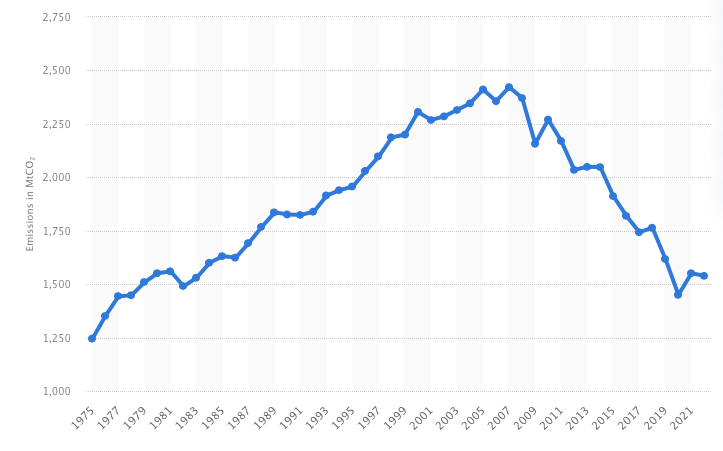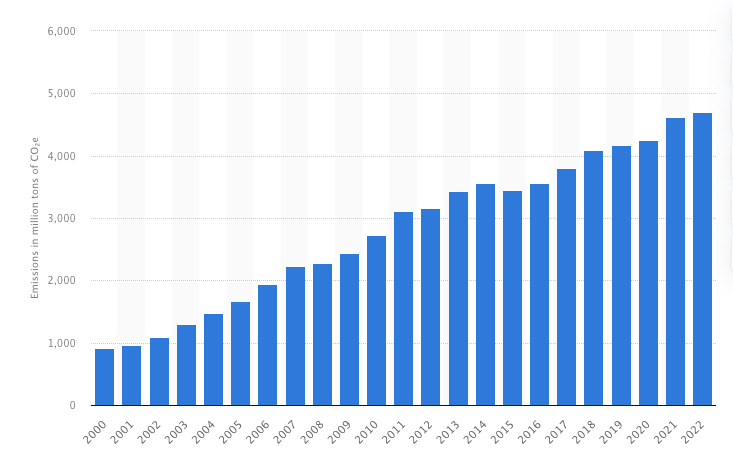New U.S.-China Climate Deal: Same as the Old Deals
China pledges again to do exactly what it was going to do anyway.

For years U.S.-China climate negotiations have been much like the running gag in the Rocky and Bullwinkle cartoon where Bullwinkle says "Hey Rocky, watch me pull a rabbit out of my hat." To which Rocky responds, "But that trick never works." Bullwinkle gamely replies, "This time for sure!"
The just-released Sunnylands Statement on Enhancing Cooperation to Address the Climate Crisis is the latest effort by the Biden administration's equivalent of Bullwinkle, Climate Envoy John Kerry, to pull off the trick of getting China to collaborate with the U.S. on climate change. The Sunnylands Statement follows earlier efforts by Kerry to obtain Chinese commitments on climate change in 2014 and 2015 when he was secretary of state during the Obama administration.
The new statement declares, "The United States and China recognize that the climate crisis has increasingly affected countries around the world." Consequently, both countries pledge that they "intend to sufficiently accelerate renewable energy deployment in their respective economies through 2030 from 2020 levels so as to accelerate the substitution for coal, oil and gas generation, and thereby anticipate post-peaking meaningful absolute power sector emission reduction."
"Anticipate post-peaking meaningful absolute power sector emission reduction"? In fact, China has not yet peaked in its power sector carbon dioxide emissions, nor has it done so with respect to its economy's overall emissions.
On the other hand, U.S. power sector carbon dioxide emissions have been "post-peak" for 15 years. U.S. power sector emissions peaked in 2007 at 2,422 million metric tons and are now down to 1,539 million metric tons. As of 2022, the switch from coal to less-carbon-intensive natural gas for electricity generation accounts for two-thirds of the drop in U.S. power sector emissions, whereas one-third results from increased generation from wind and solar power.

In contrast, Chinese power sector emissions have more than doubled from 2,230 million metric tons in 2007 to 4,695 million metric tons now. A significant proportion of this increase is the result of rising coal-powered generation since 2016, which is expected to reach a record high this year. In other words, China's power sector is certainly not yet "post-peak."

This divergence between American and Chinese emissions trends should not be a surprise. After all, the same John Kerry who negotiated the new Sunnylands statement also negotiated for the Obama administration the 2014 U.S.-China Joint Announcement on Climate Change. Nine years ago, China frankly stated that, for its economy as a whole, it "intends to achieve the peaking of CO2 emissions around 2030." Since 2014, China's overall carbon dioxide emissions have continued to increase, rising from about 10,000 million metric tons to a projected 11,470 million metric tons this year. No peaking yet. In contrast, the U.S. economy's overall carbon dioxide emissions peaked in 2007 at around 6,000 metric tons and is forecasted to be 4,971 metric tons this year, a 17 percent drop.
A year later, the two countries issued the 2015 U.S.-China Joint Presidential Statement on Climate Change. In that statement, the U.S. pledged to "reduce CO2 emissions from the power sector to 32% below 2005 levels by 2030." As of 2022, those emissions are 36 percent below their 2005 levels, eight years ahead of the U.S.'s promised schedule.
In the 2015 statement, China merely committed that it "will lower carbon dioxide emissions per unit of GDP by 60% to 65% from the 2005 level by 2030." As of 2020, China's carbon dioxide emissions per unit of gross domestic product have actually fallen from 0.9 kg to 0.5 kg per unit of GDP, a 45 percent reduction since 2005. In comparison, U.S. emissions have fallen from 0.4 kg to 0.2 kg of carbon dioxide per unit of GDP, a 50 percent drop. It is worth noting that the U.S. produces more than twice as much value per unit of carbon dioxide emissions than does China.
In the Sunnylands statement, both China and the U.S. vow to "accelerate" numerous "concrete actions, including practical and tangible collaborative programs." Maybe this time for sure, but past experience suggests that the gag is on us.



Show Comments (25)